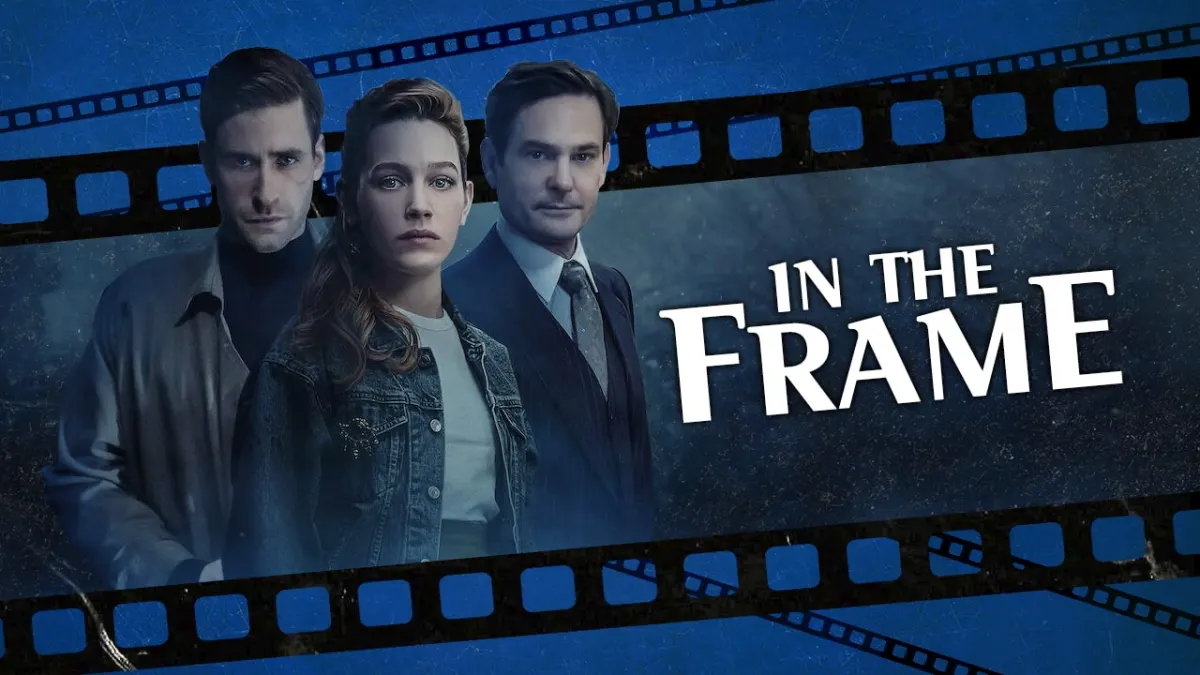“The Romance of Certain Old Clothes” is a miniature masterpiece.
Of course, the production team knew that the eighth episode of The Haunting of Bly Manor was going to be something special. Actor Kate Seigel has talked about how the episode was “sort of experimental” for the series and how the writers “wanted it to stand out.” The obvious point of comparison is to “Two Storms,” the sixth episode of The Haunting of Hill House, an episode shot to look like a single (impossible) long take.
Indeed, the episode that would become “The Romance of Certain Old Clothes” began as an aborted episode of The Haunting of Hill House that would look into the origin stories of the ghosts occupying the eponymous residence but was scrapped for budget and time reasons. Despite being the penultimate episode of the season, “The Romance of Certain Old Clothes” was actually “the last thing that was shot,” to allow for the redressing of the sets.
“The Romance of Certain Old Clothes” is not as technically ambitious as “Two Storms.” However, it is still a creative triumph for the production team, including showrunner Mike Flanagan, writer Leah Fong, and director Axelle Carolyn. It is both a standalone ghost story, a loving tribute to writer Henry James and to classic horror cinema, and a lyrical encapsulation of the themes that drive not only The Haunting of Bly Manor, but the bulk of Mike Flanagan’s filmography.
While “The Romance of Certain Old Clothes” does not have a gimmick as effective as the illusory long take in “Two Storms,” it marks a clear stylistic departure for The Haunting of Bly Manor. The bulk of the story is an extended flashback, moving back over a century to tell the story of Viola Willoughby (Siegel). The bulk of the episode is shot in black and white, with a heavy reliance on the show’s narrator, Jamie (Carla Gugino). Jamie narrates most of the season, but more passively.

Director Axelle Carolyn relishes the opportunity to tell a much older sort of ghost story. Flanagan is a major horror buff, and The Haunting of Bly Manor is shaped not only by the writing of Henry James but by various adaptations. At various points, the series quotes visually from The Innocents, Jack Clayton’s 1961 adaptation of The Turn of the Screw. With this episode, the show can indulge in a more overt sort of homage.
Carolyn shoots “The Romance of Certain Old Clothes” like a classic black-and-white horror film. “Everybody was always looking at episode eight as our chance to do what we love the most and what made us want to do The Haunting at all, which is to look back at Robert Wise and Jack Clayton and those incredibly influential movies from the early ’60s,” explained Flanagan. Siegel talks about taking “old scary Dracula movies” as a frame of reference.
This is obvious in the way that the episode is put together. Cinematographer James Kniest lights and frames the actors in such a way as to create the “heavy blacks and snappy whites” that evoke an older style of movie-making. The close-ups are shot with a wide lens so as to achieve the classic distortion effect of appearing to bend the edge frame. Carolyn uses a lot of natural lighting – fires and candles – to create a sense of characters trying to keep out the darkness.
Leah Fong’s script leans into this through its use of evocative language. The entirety of The Haunting of Bly Manor is effectively an extended ghost story related at a wedding rehearsal dinner, but “The Romance of Certain Old Clothes” is especially reliant on the aforementioned voice-over narration. The narration is poetic, paired beautifully with the imagery. As the narrator discusses Viola’s attempts to traverse “an ocean of time,” there’s an implicit and beautiful contrast with the still water of the lake where she rests.

“The Romance of Certain Old Clothes” also serves as a beautiful encapsulation of showrunner Mike Flanagan’s core themes. As the title implies, the episode is largely drawn from the Henry James short story of the same name, albeit reworked as a subtly feminist fable about Viola’s struggle to preserve her family and her status – first through the “strategic union” of marriage and later in the face of death itself – until she reaches the point that there’s nothing left but the struggle.
However, “The Romance of Certain Old Clothes” also reveals itself as a meditation on the themes of memory, identity, and time. Throughout his work, Flanagan has treated ghosts as the manifestations of memory and trauma. “When we die we turn into stories,” Olivia Crain (Gugino) explains as the metaphor in The Haunting of Hill House. “And every time someone tells one of those stories, it’s like we’re still here for them. We’re all stories in the end.”
As an aside, that line was confirmed by Flanagan to be a direct quote from an episode of Doctor Who. Flanagan has described himself as “a major Whovian,” down to the casting of Karen Gillan in Oculus. This reflected in The Haunting of Bly Manor, down to character costuming. The final episode of The Haunting of Bly Manor features a character insisting that the series is not “a ghost story,” but “a love story,” perhaps another allusion to modern Doctor Who.
There are echoes of another Doctor Who story to be found in the second half of “The Romance of Certain Old Clothes,” as Viola dies and her ghost finds herself consigned to wander the estate for all eternity – falling into patterns of old behavior and repetition. It recalls “Heaven Sent,” the story in which the Doctor (Peter Capaldi) finds himself trapped in a castle for all eternity, struggling to figure out what he is doing and why – and forced to face horrific revelations over and over.

If people who die become stories, then Viola explores what it is to be a tale that fades in time. In death, she falls into a familiar routine. The narrator explains, “She would sleep. She would wake. She would walk.” Over time, the specificity erodes. Even within the narrator’s language, Viola is reduced to “sleeping, waking, walking.” Gradually, Viola’s features fade and her identity with them until she is “just a thought, just a feeling, not a woman at all, not a person at all, not a name nor a face.”
“All things fade,” the narrator explains. “All things – flesh, stone, even stars themselves. Time takes all things. ‘Tis the way of the world. The past recedes, memories fade, and so too does the spirit. Everything yields to time – even the soul.” For Flanagan, this is where the horror of ghost stories comes from, traumas repressed and buried, memories stripped of context and meaning. The Haunting of Bly Manor uses the metaphor of the “echo,” a sound lost in its own reverberation.
At the heart of The Haunting of Bly Manor is the idea that people live on in each other’s tellings and memories. Jamie keeps her love of Dani Clayton (Victoria Pedretti) alive by telling their story over and over. This serves as a more wholesome and idealized mirror to the way in which Peter Quint Oliver (Jackson-Cohen) and Rebecca Jessel (Tahirah Sharif) literally try to sustain themselves by possessing Miles (Benjamin Evan Ainsworth) and Flora Wingrave (Amelie Bea Smith).
The Haunting of Bly Manor is shaped by echoes and repetitions. Peter is implied to have been abused by his father, and The Haunting of Bly Manor repeatedly likens his treatment of Miles and Flora to child abuse itself – in an obvious allusion to the (perhaps metaphorical) subtext of The Turning of the Screw. Viola’s reaction to her own reflection is itself a mirroring of Dani’s earlier reaction to a mirror, itself recalling the central plot of Flanagan’s earlier film Oculus.
https://www.youtube.com/watch?v=tykS7QfTWMQ
“Nothing holds,” the narrator informs her audience. “All things change over time.” Earlier in the story, explaining the beauty of the impermanent moonflower to Dani, her younger self (Amelia Eve) found some beauty in the fact that nothing lasts forever. “It all breaks down and rises back up, and breaks down again, and every living thing grows out of every dying thing. We leave more life behind us to take our place. That life refreshes and recycles, and on and on it goes.”
That is the nightmare of The Haunting of Bly Manor, and much of Flanagan’s work, beautifully summarized in the 50-minute telling of “The Romance of Certain Old Clothes.” The worst outcome is not death or change, but instead to be cut off from the tides and the flow of the ocean of time, left to fade and wallow at the bottom of a lake reduced to the most primal emotions without form or life or detail, just “need… and loneliness… and rage.”
“The Romance of Certain Old Clothes” is a superb episode of television, a powerful ghost story and moving meditation on the passage of memory, identity, and time.





